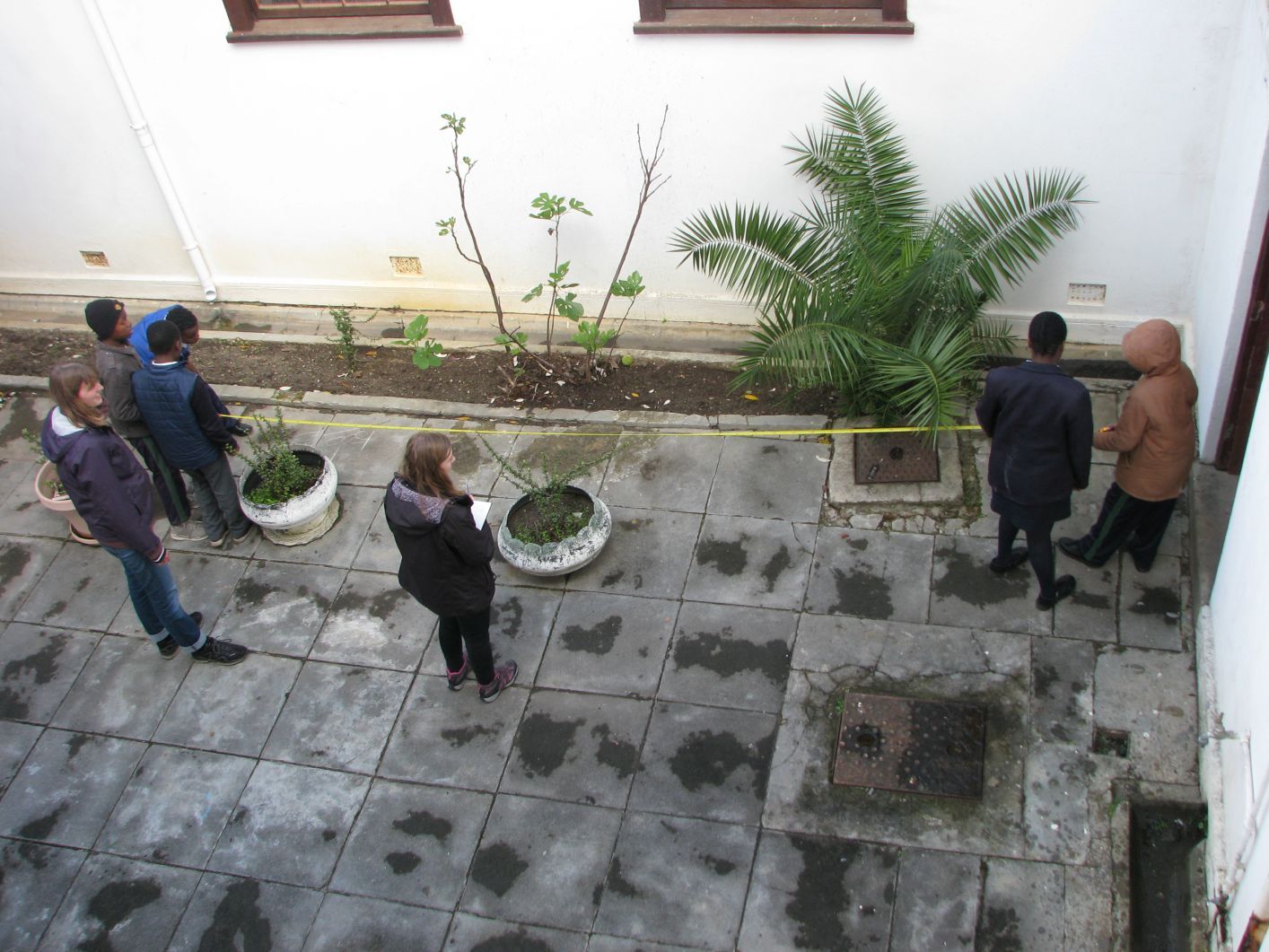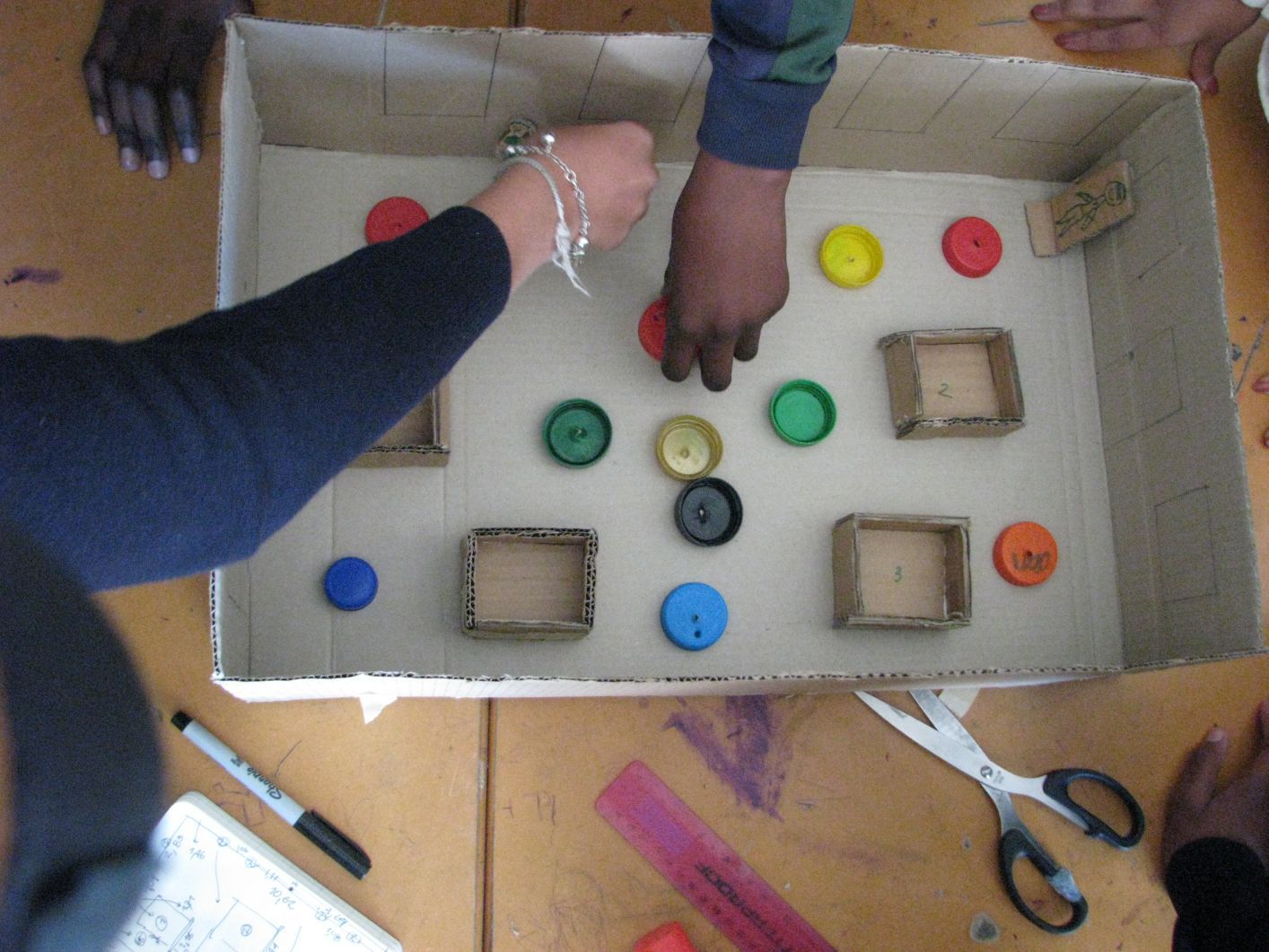Self-watering high beds – Good Hope Primary (2018)
The reason for the project was the desire of the students participating in the summer school (see One World Development) for a practical and real project that they could realise themselves. 8 students from Aachen took part in the high bed project, which was financially supported by Engagement Global’s Concrete Peace Service programme. The students also made their own fundraising contribution to the project.
In the last week of August, the students in Aachen prepared for their task in Cape Town in several workshops on the topics of South Africa, urban farming/urban gardening in Cape Town and model making. The workshops were preceded by intensive research into similar projects.
Partner organisation in the project in Cape Town was the Oranjezicht Cityfarm (OCZF). There, the students “discovered” old fruit crates that had been converted into high beds on the farm and recognised these as the ideal container for the planned, self-watering raised bed variant. The fruit farms around Cape Town have converted their storage to plastic boxes and are now selling the approx. 15,000 wooden boxes as recycled products! In addition to OCZF, teh students were also inspired by the gardens of Abalimi Bzekhaya, SEED, Ikhaya and the Oude Molen Ecovillage.



The school decided to install the raised beds in the two inner courtyards. In addition to the high beds, the idea of Ikhaya Gardens to build chairs from car tyres with the help of washing cords was included in the project. In consultation with the head teacher and the class teacher, a garden group of 12 children from grade 6 was formed, with whom the further planning of the courtyards and the subsequent construction were worked out together. The two courtyards were measured together, favourite vegetables and fruit were painted and simple scale models of the courtyards were built. It was particularly nice to see how the children finally understood how to use the models to plan the design of the courtyards.



The construction phase of the project took place during the school holidays. The parents had given special permission for the children to do this. The delivered fruit crates were first arranged in the two inner courtyards of the school according to the plans and models. The children then painted the fruit crates with a primer and initial motifs. The following day, the car tyres took centre stage. The pupils painted them brightly in all kinds of colours, which the children mixed themselves, to later create flower beds and seating areas.



Each of the eight fruit crates was filled with 400 kg of gravel. This serves as a water reservoir at the bottom of the bed. The pipe to keep the water reservoir topped up and the overflow pipe to prevent the plants from standing in water were then installed. A water-permeable fleece was cut to size. It serves as a separating layer between the gravel and soil and ensures that the soil does not slip between the stones, which simply store water in the spaces between them. The plants can later draw water from below all the time due to the concentration gradient. The beds only need to be watered once a week via the inlet pipes!



On the last day of construction, the boxes and tyres were filled with soil and compost and planted with the plants that the children had requested: strawberries, pineapple, grapes, carrots, spinach, fennel, beans, baby-marrows, pumpkin, lettuce, onions and kitchen herbs. Xolisa Bangani from Ikhaya Gardens in Khaylitsha also came to teach the children how to build seats out of tyres. Even some of the parents who had come to pick up the children helped to get everything ready!

